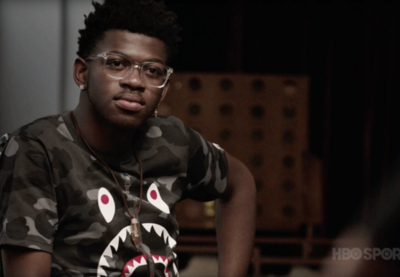It’s often in a moment of professed allyship when you hear it:
“I don’t care if you are black, white or purple—I treat all people the same.”
“I don’t care where you are from—in this classroom, you are home.”
“What you do in your private time is your business, and I just care about our time together.”
The stems all sound like virtues. The roots all sound the same: I don’t care.
In a viral video from an episode of HBO’s The Shop, comedian Kevin Hart interrupts a question posed to 20-year-old rapper Lil Nas X, who in June came out as gay in the midst of a record-breaking 19 consecutive weeks atop the Billboard Hot 100 list with his song “Old Town Road.” Said Hart: “He said he was gay! So what?” This, despite Hart’s now well-chronicled history of jokes that suggested he very much cares if his son or other men are gay. Lil Nas X patiently and succinctly explained the power of young kids seeing someone come out while on top of an industry (and two genres, in country and hip-hop) that haven’t always celebrated openly gay men.
Lil Nas X—who graduated from a Georgia high school just two years ago—handled himself with measured maturity and clarity. He clearly recognized Hart’s disingenuous obliviousness to challenges faced by LGBTQ people. He had dealt with this sort of performed ignorance before.
Because, after all, Hart’s comment is just a recent example of a common trope—a trope that often plays out in classrooms. It’s the ethos behind educators who say, “I don’t see color.” It’s the story told to students from different cultures, different countries and different experiences: “In this room, we are all the same.”
As nice as that sounds, it isn’t true. While educators may intend to tell students they’re all equally loved, that’s not the message they send. That’s because “I don’t care about...” is not a synonym for “I love you because…”—it sounds, instead, like a tacit admission that you care for that student in spite of their differences.
Educators may intend to sound fair or “neutral.” But the impact is more important—and for many students, damaging. This sort of language risks students hearing that who they fundamentally are isn’t as important as fitting into a “neutral” classroom climate. A neutrality that can only exist when difference is erased or secondary.
But those who study education know better. A student’s identities, socially constructed or innate, shape how they move through the world and how they learn.
That’s why we challenge educators to consider the ways in which they erase—rather than embrace—their students’ identities. If a student comes out to you, imagine replacing “Your sexual orientation doesn’t make a difference to me; you are my student first and foremost” with a more affirming message. Listen to their lived experience. Tell them explicitly that you support who they are. Ask them if they feel your school or classroom respects their identity.
Consider how your curriculum could provide them with representation and role models—who is their Lil Nas X of literature, of history, of science or math? In short, care.
When a student speaks another language and you can learn from them, care. When a student has neurological differences and you can adjust your classroom practices to help all students feel comfortable, care. When a student has faced trauma beyond school walls, care.
Make the roots and stems of your work the same: Care.
It is often said by critics of social justice education—and social justice activism—that we do young people a disservice by adjusting to their differences. That, in doing so, we teach them that they are not the same, that oppression is inevitable, that divisiveness is a virtue.
At Learning for Justice, we disagree. Instead, we see understanding and caring about the diverse experiences of students as the ultimate tool for compassion. It is in that understanding that we can reach each student where they are. It is in that understanding that we can recognize injustice. It is in that caring that we can act on injustice and inequity—and walk toward a world wherein we care enough about each other to protect each other.
It is also, quite simply, a necessary best practice of teaching. We cannot reach—or teach—our students without knowing them.
When a student is celebrated for exactly who they are, they know they have permission to not just be somebody—but to be the very best version of themselves. Imagine the world those students could create.
Collins is a senior writer for Learning for Justice.


0 COMMENTS